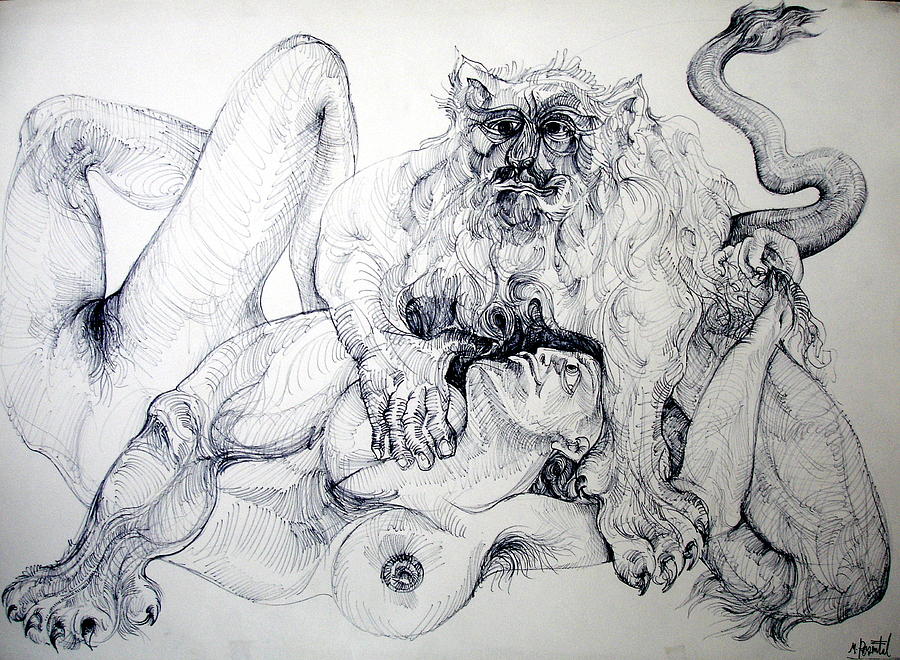Lion
in my Heart (V2)
There
is a heart embedded inside this male lion, I swear.
I eat leaves and underbrush, foliage of the forest, I belch.
Then I fall in love with birds, strangers and wild women.
Tears fall into the lush forest green below,
like Chinese crystal glass beads, shatter.
Then I realize it’s not the jungle, but I that am alone.
In the morning when the bed squeaks, both alarm clocks erupt,
I realize I’m alone in my jungle.
I hear the calls of the wild--
the streetcars, and the metro trains
wake me in my sleep in my jungle alone,
let me belch in my belly with my Tums,
let me dream in my aloneness I swell.
There is a heart embedded inside this male lion,
I swear jungle man, lion lover, and city dweller.
I eat leaves and underbrush, foliage of the forest, I belch.
Then I fall in love with birds, strangers and wild women.
Tears fall into the lush forest green below,
like Chinese crystal glass beads, shatter.
Then I realize it’s not the jungle, but I that am alone.
In the morning when the bed squeaks, both alarm clocks erupt,
I realize I’m alone in my jungle.
I hear the calls of the wild--
the streetcars, and the metro trains
wake me in my sleep in my jungle alone,
let me belch in my belly with my Tums,
let me dream in my aloneness I swell.
There is a heart embedded inside this male lion,
I swear jungle man, lion lover, and city dweller.

Lion Man with a Woman -- Moshe Rosental
Tums is an antacid made of sucrose and calcium carbonate that provides relief from acid indigestion, heartburn, and indigestion ("sour stomach"); it is also regarded as a calcium supplement. In 1928, Jim Howe, a pharmacist in St. Louis, Missouri, developed Tums in the basement of his home while treating his wife's indigestion. Howe and his uncle, A. H. Lewis, a pharmacist in Bolivar, Missouri, formed the Lewis-Howe Company and began commercial production in 1930. Their St. Louis plant still makes the product, but Lewis-Howe was bought by Revlon of New York in 1978, and Tums was overseen by the firm's Norcliff Thayer unit. Revlon spun Norcliff Thayer off to Beecham Group in 1986, and through a series of mergers Beecham eventually became GlaxoSmithKline, the world's 6th-largest phrmaceutical company.
ReplyDeleteJohn K. Smith opened its first pharmacy in Philadelphia in 1830. In 1843 Thomas Beecham launched his laxative, Beecham's Pills, in England; in 1859 Beecham opened its first factory in St Helens, Lancashire.Meanwhile, Joseph Edward Nathan, a Londoner, founded a general trading company in Bunnythorpe, New Zealand, in the 1850s. In 1865 Mahlon Kline joined the Smith firm, which 10 years later became Smith, Kline & Co. American pharmacists Henry Wellcome and Silas Burroughs founded Burroughs Wellcome & Company in London in 1880. Smith, Kline merged with French, Richard and Company in 1891 (and in 1929, when it focused more on research, it changed its name to Smith Kline & French Laboratories). In 1904 Nathan's company began producing Defiance, a dried-milk baby food, which was later branded as Glaxo; its first pharmaceutical product, produced in 1920, was vitamin D. Meanwhile, in the 1920s Burroughs Wellcome established research and manufacturing facilities in Tuckahoe, New York. Glaxo Laboratories opened new units in London in 1935 and bought up the Joseph Nathan firm in 1947 and Allen & Hanburys in 1958. In 1959 the Wellcome Company bought Cooper, McDougall & Robertson Inc to become more active in animal health, and by the 1960s Beecham became extensively involved in pharmaceuticals. Smith Kline & French began to expand globally, buying seven laboratories in Canada and the United States in 1969. Wellcome moved to Research Triangle Park in North Carolina in 1971, the same year Glaxo Inc. moved its US manufacturing there. Glaxo began to play an important role in the US market after buying Meyer Laboratories in 1978. In 1982 Smith Kline & French bought Allergan, a manufacturer of eye and skincare products and merged with Beckman Inc. in 1982 to become SmithKline Beckman, then in 1988 bought its biggest competitor, International Clinical Laboratories; in 1989 it merged with Beecham to form SmithKline Beecham plc and moved its headquarters from the UStates to the UK. Glaxo and Burroughs Wellcome merged in 1995 to form Glaxo Wellcome and acquired the California-based Affymax, a leader in the field of combinatorial chemistry. By 1999 Glaxo Wellcome had become the world's third-largest pharmaceutical company by revenue, and the world's largest manufacturer of asthma and HIV/AIDS drugs. Glaxo Wellcome and SmithKline Beecham merged in 2000, becoming GlaxoSmithKline . In 2012 GSK pleaded guilty to promoting drugs for unapproved uses, failure to report safety data, and paying kickbacks to physicians and agreed to pay a $3 billion settlement, the largest by a drug company in US history.